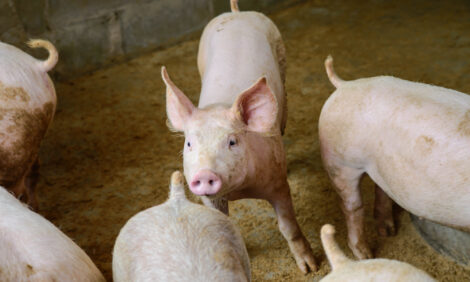



Study finds hog farms not a factor to nearby residences’ air quality
IOWA - An Iowa State University study has found that proximity to hog farms does not affect air quality inside neighboring residences as much as the activities that take place inside the residences, reports the NPB.
The 16-month study of air quality surrounding hog farms was conducted by ISU’s Department of Agriculture and Biosystems Engineering and measured concentrations of ammonia and hydrogen sulfide on farms and neighboring residences. The study was funded by the Pork Checkoff, among others.
The study, conducted in 2004 and 2005, also reveals that meteorological factors such as wind speed and solar radiation affect the concentration of hydrogen sulfide and ammonia more than the size of the operation or the type of manure storage used on the farm.
The study shows that an increase in the concentration of hydrogen sulfide measured on the farm does not show a similar increase in concentration inside nearby residences unless residences are located less than .4 mile (2,149 feet) from the farm and climate conditions are such that low wind speed and little solar radiation are present. Even under these conditions, hydrogen sulfide concentrations inside a residence located less than 300 feet from the largest operation in the study were recorded at levels more than 50 percent lower than the level currently set by the state of Iowa as one with potential health effects.
The study revealed that ammonia concentrations inside residences tend to be more concentrated than ammonia levels in the air outside the residence or at hog farm’s property line. The study’s authors said evidence suggests that ammonia levels may be related more to inhabitants’ lifestyles, including smoking cigarettes and having indoor pets, than to the residence’s proximity to a hog farm. These results support a previous study conducted by the Department of Health and Human Services in Missouri in 2003.
"This is great news for us as pork producers and for our neighbors," said Craig Christensen, a pork producer from Ogden, Iowa and member of the National Pork Board. "This study follows another project, by the Department of Natural Resources, that shows that our way of life does not create odor that should require special considerations for schools, churches or other public gathering places, under Iowa law. I live here and as a resident I am one of the most interested parties in this study. I want to preserve the quality of life and health in Iowa."
ThePigSite News Team
The study, conducted in 2004 and 2005, also reveals that meteorological factors such as wind speed and solar radiation affect the concentration of hydrogen sulfide and ammonia more than the size of the operation or the type of manure storage used on the farm.
The study shows that an increase in the concentration of hydrogen sulfide measured on the farm does not show a similar increase in concentration inside nearby residences unless residences are located less than .4 mile (2,149 feet) from the farm and climate conditions are such that low wind speed and little solar radiation are present. Even under these conditions, hydrogen sulfide concentrations inside a residence located less than 300 feet from the largest operation in the study were recorded at levels more than 50 percent lower than the level currently set by the state of Iowa as one with potential health effects.
The study revealed that ammonia concentrations inside residences tend to be more concentrated than ammonia levels in the air outside the residence or at hog farm’s property line. The study’s authors said evidence suggests that ammonia levels may be related more to inhabitants’ lifestyles, including smoking cigarettes and having indoor pets, than to the residence’s proximity to a hog farm. These results support a previous study conducted by the Department of Health and Human Services in Missouri in 2003.
"This is great news for us as pork producers and for our neighbors," said Craig Christensen, a pork producer from Ogden, Iowa and member of the National Pork Board. "This study follows another project, by the Department of Natural Resources, that shows that our way of life does not create odor that should require special considerations for schools, churches or other public gathering places, under Iowa law. I live here and as a resident I am one of the most interested parties in this study. I want to preserve the quality of life and health in Iowa."
ThePigSite News Team








